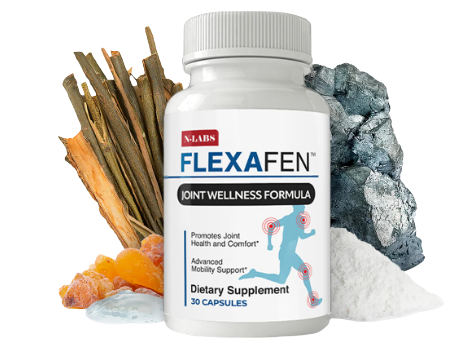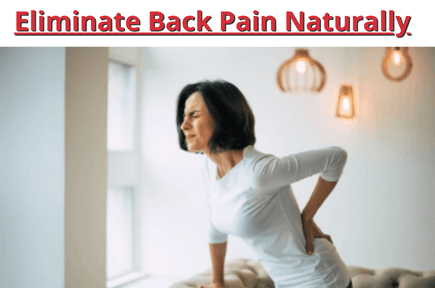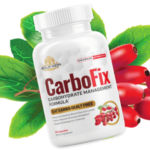comfort relie
Pain relief and discomfort relief: Definitive guide step by step solutions
Pain relief and discomfort relief, Pain and discomfort are common experiences that can significantly impact daily life, affecting everything from productivity to overall well-being.
In this comprehensive guide, we’ll delve into various methods and techniques for effectively managing and alleviating pain and discomfort.
Whether you’re dealing with acute or chronic pain, this guide is designed to provide you with practical solutions and insights to help you lead a more comfortable life.

Understanding Pain and Discomfort
Pain can manifest in different forms, including acute pain resulting from injury or illness, chronic pain that persists over time, and neuropathic pain caused by nerve damage.
On the other hand, discomfort can arise from physical, psychological, or environmental factors, leading to a range of sensations that can be distressing.
Understanding the physiology of pain is crucial for effective management. Pain signals travel through the nervous system, alerting the brain to potential harm or injury.
However, chronic pain can result from ongoing signals even after the initial injury has healed, leading to a complex interplay of biological, psychological, and social factors.
Natural Remedies for Pain Relief
Natural remedies offer a holistic approach to pain relief, harnessing the healing properties of herbs, essential oils, and alternative therapies like acupuncture and acupressure.
These methods can be effective in managing pain and reducing inflammation without the side effects often associated with pharmaceutical interventions.
For example, turmeric, a spice with potent anti-inflammatory properties, has been used for centuries in traditional medicine to alleviate pain and promote healing.
Similarly, ginger contains compounds that can reduce pain and improve joint function, making it a popular choice for those seeking natural pain relief.
Essential oils such as lavender, peppermint, and eucalyptus have also been shown to have analgesic and anti-inflammatory effects when used topically or in aromatherapy.
These oils can help soothe sore muscles, alleviate tension headaches, and promote relaxation, enhancing overall comfort and well-being.
Medical Approaches to Pain Relief
For more severe or persistent pain, medical interventions such as prescription medications, physical therapy, and interventional procedures like steroid injections or nerve blocks may be recommended. These approaches target the underlying causes of pain and aim to improve overall quality of life for individuals dealing with chronic conditions.
Prescription medications can range from nonsteroidal anti-inflammatory drugs (NSAIDs) for managing inflammation and pain to opioids for severe pain management.
However, it’s essential to use these medications responsibly and under the guidance of a healthcare professional to minimize the risk of dependency and adverse effects.
Physical therapy plays a crucial role in pain management by improving mobility, strength, and flexibility while reducing pain and preventing further injury.
Therapeutic exercises, manual techniques, and modalities such as heat and cold therapy can all contribute to a comprehensive rehabilitation program tailored to individual needs.
Interventional procedures, including epidural injections, nerve blocks, and radiofrequency ablation, target specific pain generators to provide targeted relief. These procedures are often used in conjunction with other treatments to optimize outcomes and enhance overall well-being.
Lifestyle Changes for Pain Management
Making lifestyle adjustments, such as incorporating regular exercise, adopting a balanced diet focused on anti-inflammatory foods, and practicing stress management techniques like meditation and yoga, can significantly contribute to pain management and overall well-being.
Regular physical activity not only strengthens muscles and joints but also releases endorphins, natural pain-relieving chemicals that can improve mood and reduce perception of pain.
Engaging in activities you enjoy, whether it’s walking, swimming, or yoga, can promote a sense of well-being and enhance pain tolerance.
Dietary modifications can also play a role in pain management by reducing inflammation and supporting overall health.
Foods rich in omega-3 fatty acids, such as fatty fish, flaxseeds, and walnuts, have anti-inflammatory properties that can help alleviate joint pain and stiffness. Incorporating fruits, vegetables, whole grains, and lean proteins into your diet can provide essential nutrients for optimal healing and pain relief.
Stress management techniques, including deep breathing exercises, progressive muscle relaxation, and mindfulness meditation, can help reduce stress hormones that contribute to pain perception. Mind-body practices like yoga and tai chi combine physical movement with mental focus, promoting relaxation and resilience against pain and discomfort.
Technology and Innovations in Pain Relief
Advancements in technology have led to innovative pain relief solutions, including TENS units for electrical stimulation, wearable devices for monitoring and managing pain, and virtual reality therapy for distraction and relaxation, offering new avenues for pain management.
Transcutaneous electrical nerve stimulation (TENS) units deliver low-voltage electrical currents to targeted areas of pain, stimulating nerve fibers and blocking pain signals to the brain.
These portable devices can be used at home to provide on-demand pain relief for conditions such as back pain, arthritis, and neuropathy.
Wearable devices equipped with sensors and algorithms can track activity levels, monitor vital signs, and provide personalized feedback to help individuals manage their pain and improve overall health. These devices can also facilitate communication between patients and healthcare providers, enhancing collaboration and treatment outcomes.
Virtual reality (VR) therapy immerses individuals in a computer-generated environment, distracting them from pain sensations and promoting relaxation.
VR experiences can range from tranquil nature scenes to interactive games designed to engage and divert attention away from discomfort, offering a non-pharmacological approach to pain management.
Mind-Body Approaches for Discomfort Relief
Mindfulness-based practices such as cognitive-behavioral therapy (CBT), mindfulness meditation, and relaxation techniques can be powerful tools for managing discomfort, reducing anxiety, and promoting mental and emotional well-being.
Cognitive-behavioral therapy (CBT) is a psychotherapeutic approach that helps individuals identify and modify negative thought patterns and behaviors contributing to discomfort and distress.
By learning coping strategies and problem-solving skills, individuals can develop resilience and improve their quality of life.
Mindfulness meditation involves cultivating awareness of present-moment experiences without judgment, allowing individuals to observe thoughts, emotions, and sensations with acceptance and compassion.
Mindful practices can reduce reactivity to discomfort and enhance self-regulation skills for greater emotional balance and well-being.
Relaxation techniques such as deep breathing exercises, progressive muscle relaxation, and guided imagery can elicit the relaxation response, a state of physiological calmness that counteracts the stress response.
These techniques promote relaxation, reduce muscle tension, and enhance overall comfort and well-being.
Combination Therapies for Comprehensive Relief
Integrative approaches that combine complementary therapies like chiropractic care and massage therapy with conventional treatments in multidisciplinary pain clinics can offer comprehensive relief for individuals with complex pain conditions.
Chiropractic care focuses on spinal alignment and joint mobility, addressing musculoskeletal imbalances that contribute to pain and discomfort.
Through manual adjustments, therapeutic exercises, and lifestyle recommendations, chiropractors aim to restore optimal function and alleviate pain for improved quality of life.
Massage therapy involves the manipulation of soft tissues to reduce muscle tension, improve circulation, and promote relaxation.
Various massage techniques, including Swedish massage, deep tissue massage, and myofascial release, can target specific areas of pain and discomfort, enhancing overall comfort and well-being.
Multidisciplinary pain clinics bring together a team of healthcare professionals, including physicians, physical therapists, psychologists, and nutritionists, to provide comprehensive care for individuals with chronic pain conditions.
These clinics offer personalized treatment plans tailored to individual needs, integrating medical interventions, rehabilitative therapies, and psychosocial support for optimal outcomes.
Tips for Preventing Pain and Discomfort
Preventive strategies such as maintaining proper posture, practicing ergonomic principles at work and home, implementing injury prevention techniques, and prioritizing long-term wellness can help minimize the risk of pain and discomfort.
Good posture plays a crucial role in spinal alignment and musculoskeletal health, reducing the strain on muscles and joints that can lead to pain and discomfort.
Ergonomic principles, such as adjusting workstation setup, using supportive furniture, and taking regular breaks, can promote optimal posture and reduce the risk of repetitive strain injuries.
Injury prevention techniques, including proper warm-up and stretching before physical activity, using protective gear during sports and recreational activities, and avoiding overexertion, can reduce the risk of acute injuries that can cause pain and impair function.
Listening to your body’s signals and respecting your limits can also prevent overuse injuries and promote long-term well-being.
Prioritizing long-term wellness through healthy lifestyle habits, including regular exercise, nutritious diet, adequate sleep, and stress management, can support overall health and resilience against pain and discomfort.
Building a strong foundation of physical, emotional, and social well-being can enhance quality of life and reduce the need for reactive pain management strategies.
Conclusion Pain relief and discomfort relief
In conclusion, managing pain and discomfort requires a multifaceted approach that addresses the underlying causes, incorporates natural and medical interventions, embraces lifestyle changes, leverages technology and innovations, and prioritizes preventive measures.
Flexafen, a comprehensive pain relief solution, offers a synergistic blend of ingredients designed to support joint health, reduce inflammation, and improve overall mobility and comfort.
By adopting a personalized and holistic approach to pain management, individuals can take control of their well-being and enjoy a more pain-free and comfortable life.

Guia passo a passo para alívio temporário da dor e desconforto Flexafen





